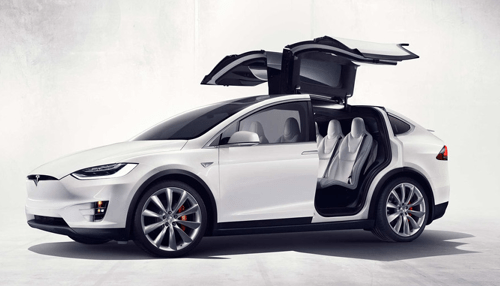Tesla puts sales figures on track to meet its stated goal of delivering 47,000 to 50,000 Model S and Model X vehicles in the first half of 2017. They had delivered 25,418 cars in 2017’s first quarter, which is a record for the company…Tesla said,
The company’s electric vehicle (EV) deliveries have been closely watched after suffering manufacturing setbacks in 2015 and 2016 and repeatedly posting losses in quarterly financial reports. Last year, CEO Elon Musk made a point of talking about building the most efficient manufacturing process possible, calling Tesla’s factories “the machine that builds the machine.” Tesla had hoped to deliver 50,000 vehicles in the second half of 2016, but it just missed that goal—the company delivered 24,500 vehicles in Q3 and 22,200 vehicles in Q4, bringing its total to 46,700 for 2016’s second half.
In an e-mail on Sunday, Tesla spokesperson Dave Arnold said that in Q1 the company delivered 13,450 Model S cars and approximately 11,550 Model X cars. An additional 4,650 vehicles were produced but had not been delivered to the customers at the time the announcement was made. “Our delivery count should be viewed as slightly conservative, as we only count a car as delivered if it is transferred to the customer and all paperwork is correct,” Arnold wrote.
The highly anticipated Model 3 is expected to start production in July of this year. The company is also expected to ramp up production of Powerwall home storage batteries at the already-running Gigafactory and to start production on the solar roof tiles it debuted in advance of its purchase of SolarCity last year.
Electric vehicle sales
According to Inside EVs, which keeps a running score card for electric vehicle sales, Tesla holds the top spot for sales of electric vehicles this year, but Chevrolet is close behind. Despite winter being a traditionally slow time for electric vehicle sales, Tesla apparently managed to sell 6,100 Model S cars and 4,300 Model X cars in January, February, and March. Note that sales are separate from deliveries here, and Tesla doesn’t release monthly sales reports, so Inside EVs does its own estimates. These numbers seem to be conservative, as The Wall Street Journal estimated Tesla sold 3,700 cars in February 2017, but Inside EVs only estimated 2,550.
Other companies that do release monthly sales reports are more straightforward, though. The plug-in hybrid Chevrolet Volt apparently sold 5,563 cars in the first three months of the year, and the automaker’s Bolt, a long-range, sub-$40,000 all-electric vehicle that’s supposed to compete with Tesla’s Model 3, sold 3,092 cars. The Nissan Leaf was another one of the top performers this quarter with 3,287 sales, as was the Toyota Prius Prime with 4,346 sales.
Those numbers are small compared with internal combustion numbers (for comparison, Ford sold 586,462 cars in the first three months of 2017, including the couple-thousand electric and hybrid electric Energi and Focus electric models it sold). But electric vehicles represent a growing market. Inside EVs noted that in February 2017, 12,025 electric vehicles were sold in the US. In February 2016, just 7,763 were sold.


